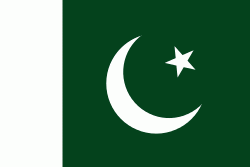Phalia
Alexander the Great and his army crossed the Jhelum in July 326 BC at the Battle of the Hydaspes River where he defeated the Indian king Porus. According to Arrian (Anabasis, 29), he built a city on the spot whence he started to cross the river Hydaspes now Jhelum River, which he named Bukephala or Bucephala to honour his famous and loyal dead horse Bukephalus or Bucephalus. It is thought that ancient Bukephala was near the site of modern Jhelum City but that is wrong. Phalia was named after Bucephalus, the name of the Alexander's dead horse, and presently a tehsil of Mandi Bahauddin District. Alexander while going forward from Taxila, opted alternate way despite using traditional route i.e. today's Grand Trunk Road (road between Afghanistan and Bangladesh through Pakistan) and built two cities on opposite banks of the river Hydaspes on the route between Bhera and Mong.
In AD 997, Sultan Mahmud Ghaznavi, took over the Ghaznavid dynasty empire established by his father, Sultan Sebuktegin, In 1005 he conquered the Shahis in Kabul in 1005, and followed it by the conquests of Punjab region. The Delhi Sultanate and later Mughal Empire ruled the region. The Punjab region became predominantly Muslim due to missionary Sufi saints whose dargahs dot the landscape of Punjab region. Jalalpur Sharif is located on west of the river Jhelum whereas Phalia on eastern bank in Mandi Bahauddin District close to river Jhelum earlier known as Hydaspes. A semi hill or mound i.e. the historical sign of the ancient city and a shrine still available in mid of the Mohalla Ameer. In 2010, maximum of the area reshaped into commercial land and precious heritage could not be preserved.
After the decline of the Mughal Empire, the Sikh invaded and occupied Mandi Bahauddin District. The Muslims faced severe restrictions during the Sikh rule. During the period of British rule, Mandi Bahauddin District increased in population and importance.
The predominantly Muslim population supported Muslim League and Pakistan Movement. After the independence of Pakistan in 1947, the minority Hindus and Sikhs migrated to India while the Muslims refugees from India settled down in the Mandi Bahauddin District.
Phalia is approximately the same age as Lahore. The four subdivisions (Mohallas) are named after the forefathers of Tarar tribe:
* Phalia Ameer for "Muhammad Ameer"
* Phalia Keeman for "Muhammad Karim"
* Phalia Boota for "Muhammad Boota" (also known as "Nawan Lok")
* Phalia Mehman for "Muhammad Khan"..
Map - Phalia
Map
Country - Pakistan
 |
 |
| Flag of Pakistan | |
Pakistan is the site of several ancient cultures, including the 8,500-year-old Neolithic site of Mehrgarh in Balochistan, the Indus Valley civilisation of the Bronze Age, the most extensive of the civilisations of the Afro-Eurasia, and the ancient Gandhara civilization. The region that comprises the modern state of Pakistan was the realm of multiple empires and dynasties, including the Achaemenid; briefly that of Alexander the Great; the Seleucid, the Maurya, the Kushan, the Gupta; the Umayyad Caliphate in its southern regions, the Hindu Shahis, the Ghaznavids, the Delhi Sultanate, the Mughals, the Durranis, the Omani Empire, the Sikh Empire, British East India Company rule, and most recently, the British Indian Empire from 1858 to 1947.
Currency / Language
| ISO | Currency | Symbol | Significant figures |
|---|---|---|---|
| PKR | Pakistani rupee | ₨ | 2 |
| ISO | Language |
|---|---|
| EN | English language |
| PA | Panjabi language |
| PS | Pashto language |
| SD | Sindhi language |
| UR | Urdu |















